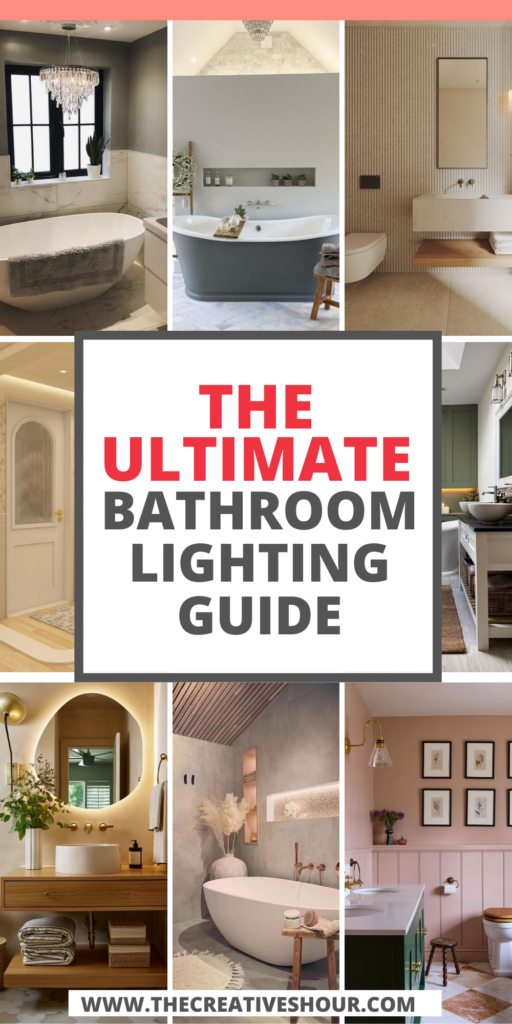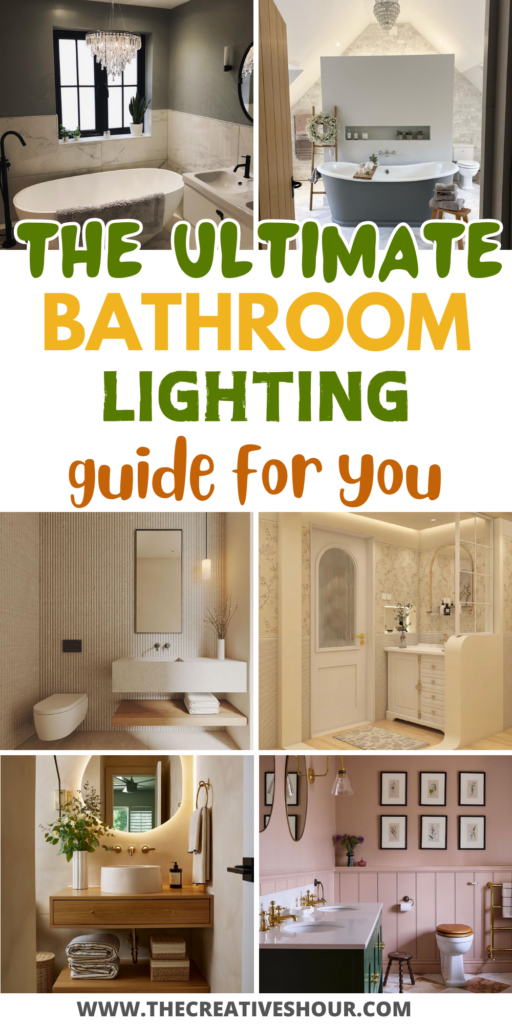
When you think about your bathroom, lighting probably isn’t the first thing that comes to mind—until you’re trying to get ready in front of the mirror and notice those harsh shadows, or the space just feels smaller and less inviting. The reality is, bathroom lighting plays a huge role in how your bathroom looks and feels. The right lighting can make the room feel bright, open, and welcoming, while poor lighting can leave it feeling dark and cramped.
Bathroom lighting isn’t just about making the space look good—it’s about function, too. The right light helps you see clearly when you’re getting ready in the morning and can create a soft, calming atmosphere when you’re winding down at night. And the best part? Upgrading your bathroom lighting is one of the simplest, most effective ways to refresh the space without breaking the bank.
In this bathroom lighting guide, we’ll show you how to get your bathroom lighting just right, from the best types of fixtures to tips for creating the perfect ambiance.
Read – 25 Beautiful And Amazing Bathroom Wall Decor Ideas
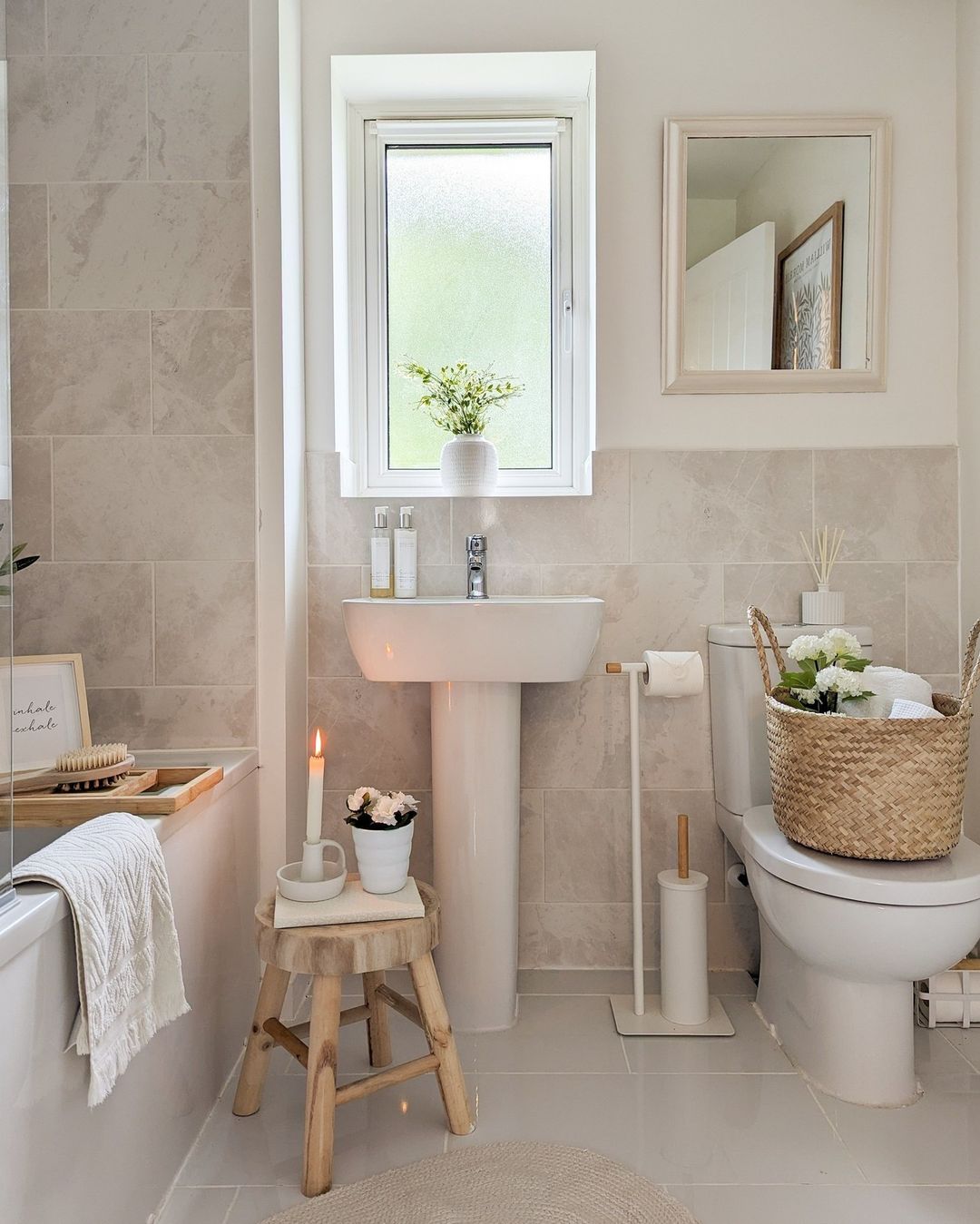 Image by persimmon_homes
Image by persimmon_homes
How to Plan Your Bathroom Lighting
Planning your bathroom lighting involves more than just picking out fixtures. To get the most out of your space, you’ll need to think about functionality, design, and how different lighting layers work together to create the right atmosphere. Here’s a step-by-step guide to help you plan your bathroom lighting:
1. Consider the Layout
Start by thinking about the layout of your bathroom. Where do you need the most light? The vanity, shower, and general space all require different types of lighting. Take note of the room’s size, any natural light output sources, and any dark spots that could use more illumination.
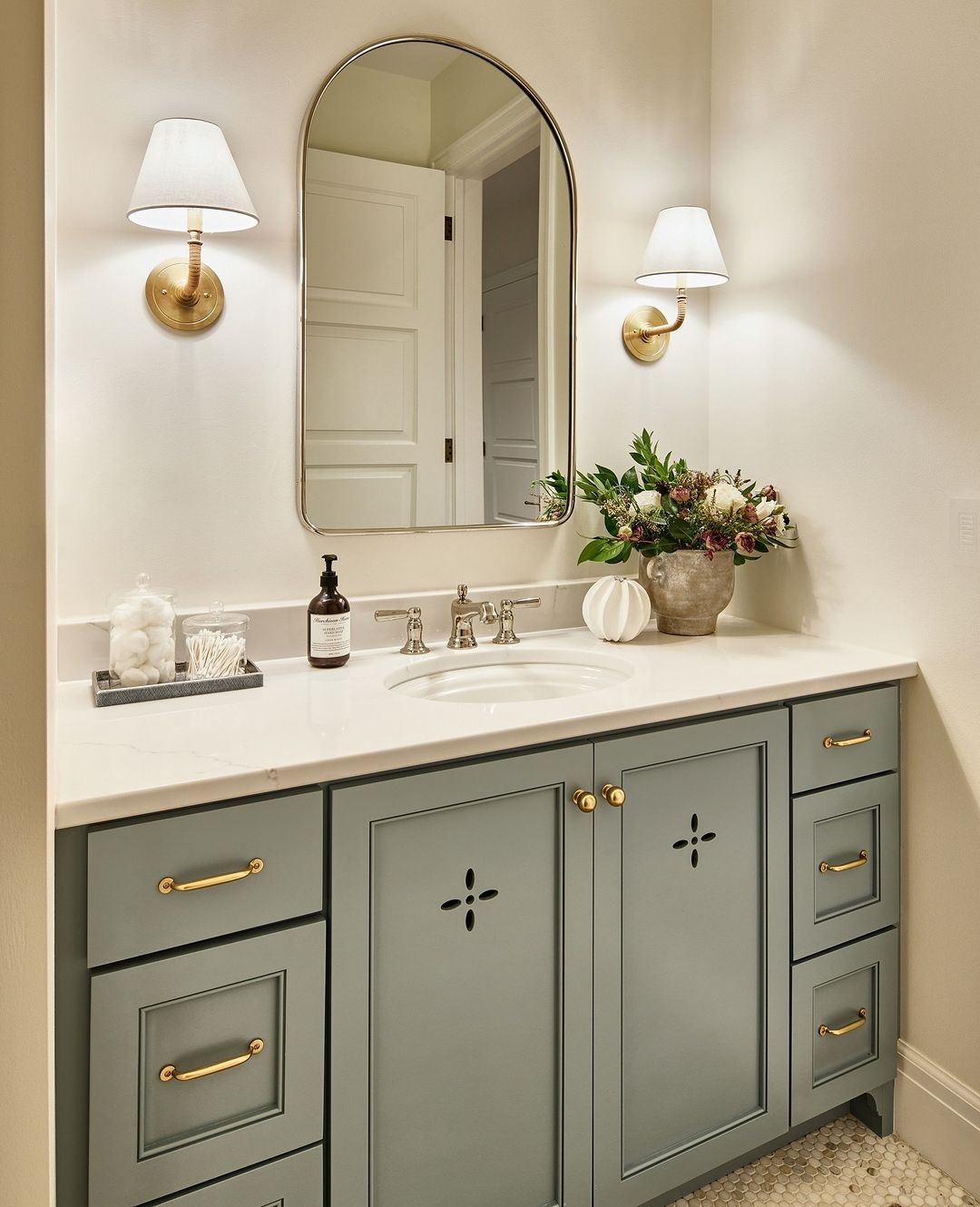 Image by lexiwestergard_design
Image by lexiwestergard_design
Emily Henderson suggests creating ambient lighting in the bathroom vanity area to avoid harsh overhead lights. She explains that overhead lighting can cast shadows, making it harder for tasks like makeup application. Instead, softer ambient light fixtures creates a calming, spa-like atmosphere, perfect for relaxation in the bath
2. Use Layers of Lighting
A great bathroom has layers of light that work together. Below are the types of lighting we can use in the bathroom.
Ambient Lighting
Ambient lighting is the main light source in your bathroom and powder room and is responsible for illuminating the entire space. This type of lighting is essential for basic visibility and setting the overall brightness level. Overhead fixtures like recessed lighting, flush-mount ceiling lights, or even a central chandelier are common choices. The goal is to make sure the whole room is evenly lit, eliminating dark spots. Ambient lighting serves as the foundation, making everything else in the room more functional and visually appealing.
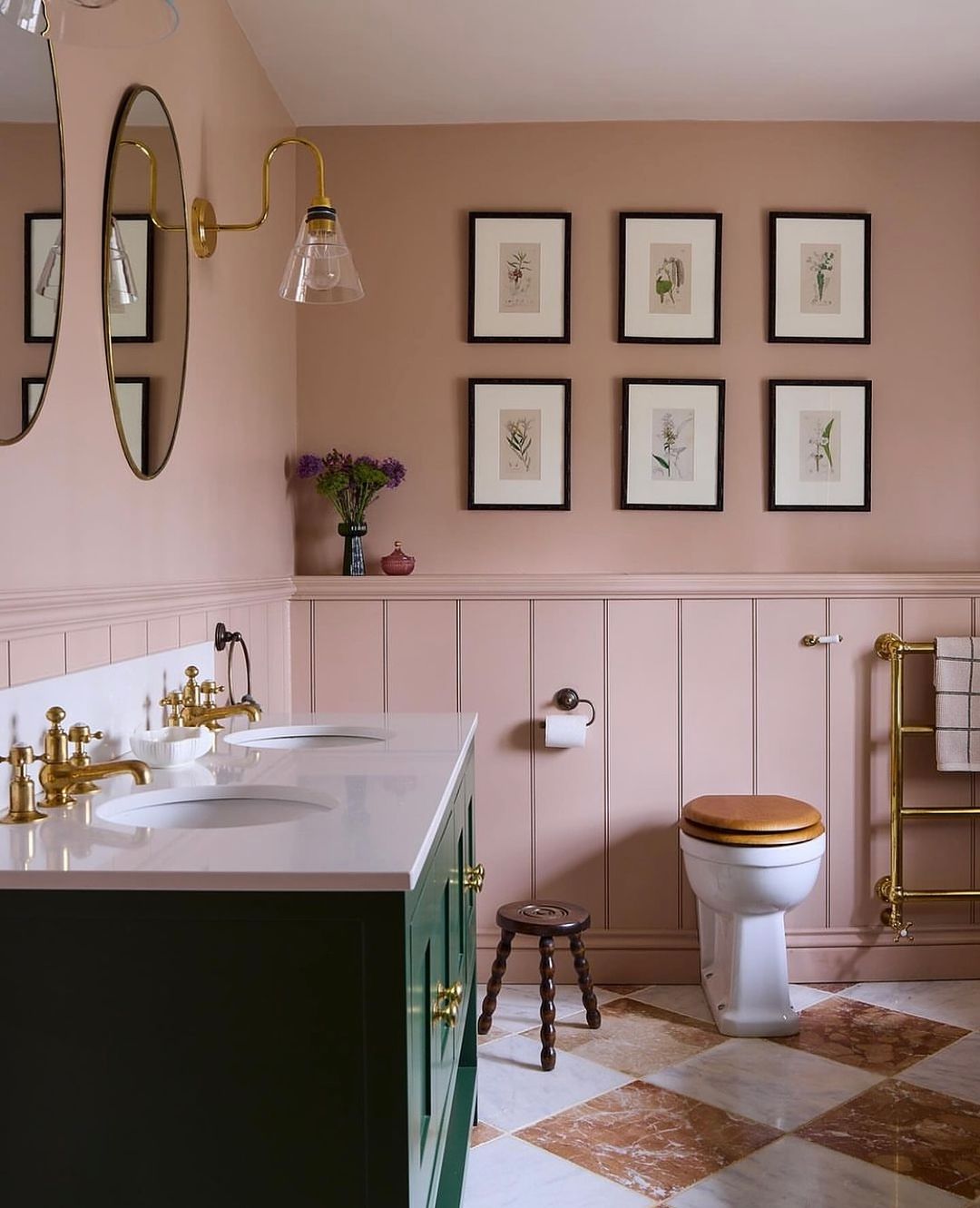 Image by johnstonparkeinteriors
Image by johnstonparkeinteriors
“Shea McGee from Studio McGee emphasizes the importance of experimenting with scale when choosing bathroom lighting fixtures. She encourages using oversized pendant lights, even in smaller spaces, to create a striking focal point. She notes that these bold lighting choices can elevate the look and feel of the entire bathroom”
Task Lighting
Task lighting focuses on areas where you need more concentrated light, particularly around the vanity or mirror. This is essential for activities like shaving, applying makeup, or styling your hair. The key is to eliminate shadows and ensure you have clear, bright lighting for precision tasks. Wall sconces placed on either side of the mirror or an LED light strip above it work perfectly here. These types of lights are designed to cast even, direct light on your face, making them ideal for grooming and beauty routines.
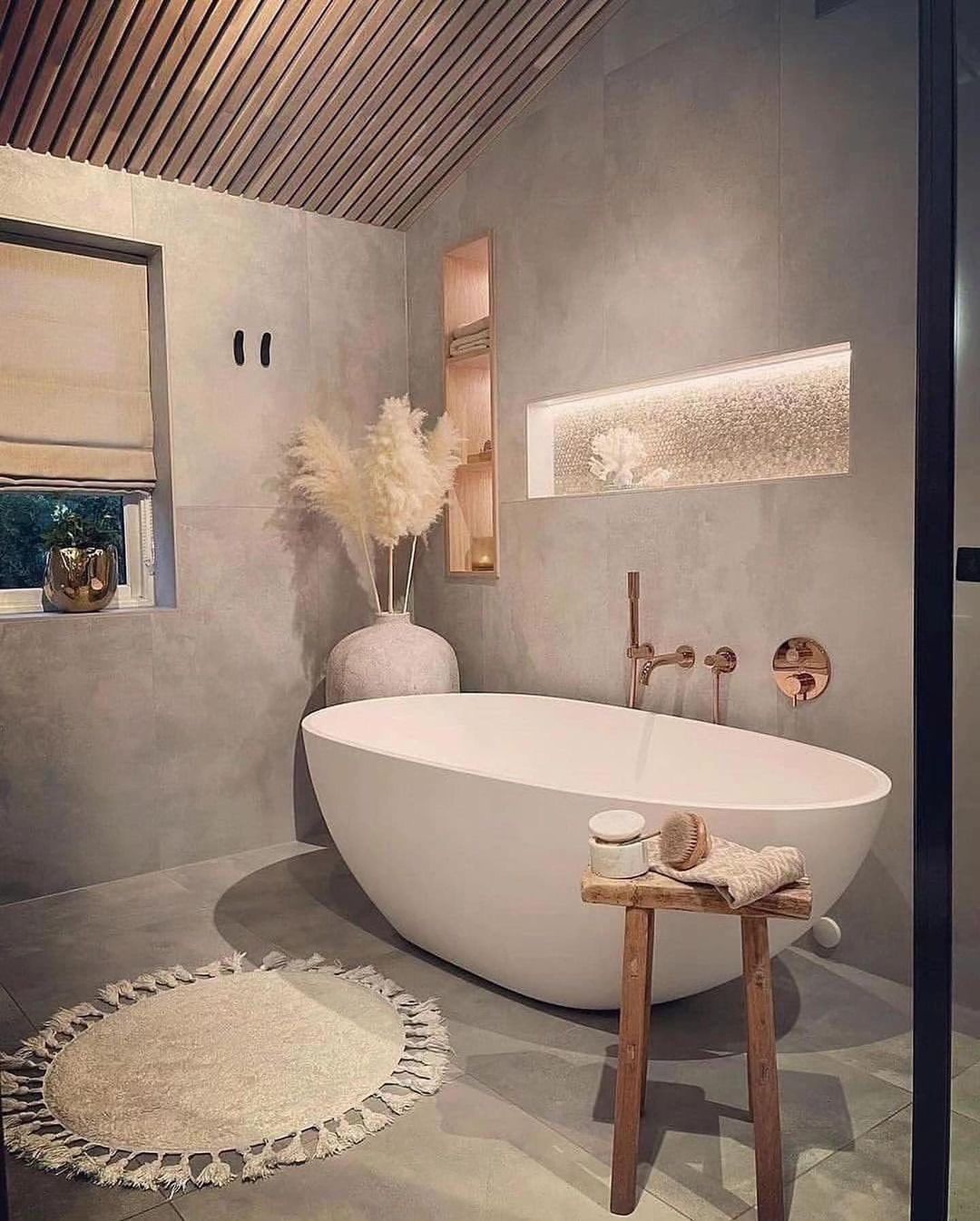 Image by luux_decor
Image by luux_decor
“Bobby Berk, of Queer Eye fame, advocates for “layered lighting in bathrooms, combining task lighting at the vanity with softer, ambient lighting around the room.” This creates a functional yet relaxing atmosphere, especially for smaller bathrooms”
Accent Lighting
Accent lighting adds personality and depth to your bathroom by highlighting certain features or adding a soft, ambient glow. It’s used to showcase architectural elements, decor, or specific areas like a beautiful tile backsplash or a statement wall. Accent lighting can also help create a calming atmosphere, perfect for relaxing baths. You might use under-cabinet lighting, small spotlights, or wall-mounted fixtures to achieve this effect. While not essential for function, accent lighting elevates the space by giving it a warm, inviting feel.
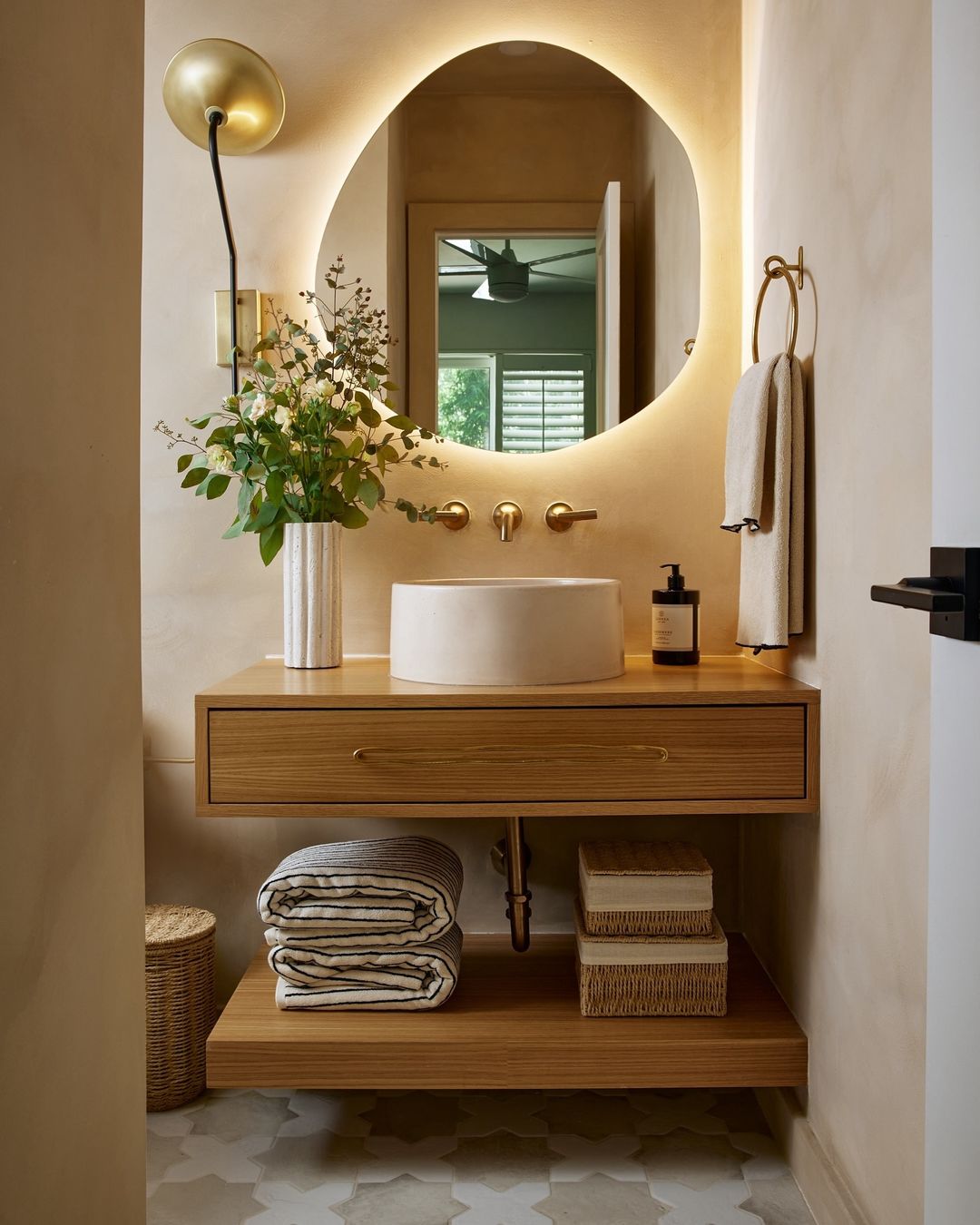 Image by christal.gines.interiors
Image by christal.gines.interiors
Decorative Lighting
Decorative lighting focuses more on aesthetics than function, but it can make a big impact on your bathroom’s overall design. Think of it as the “jewelry” for your bathroom—chandeliers, pendant lights, or other statement fixtures that catch the eye and add a bit of glamour. While it may not provide as much illumination as ambient or task lighting, decorative lighting helps tie the room together and can be a stunning focal point in the space.
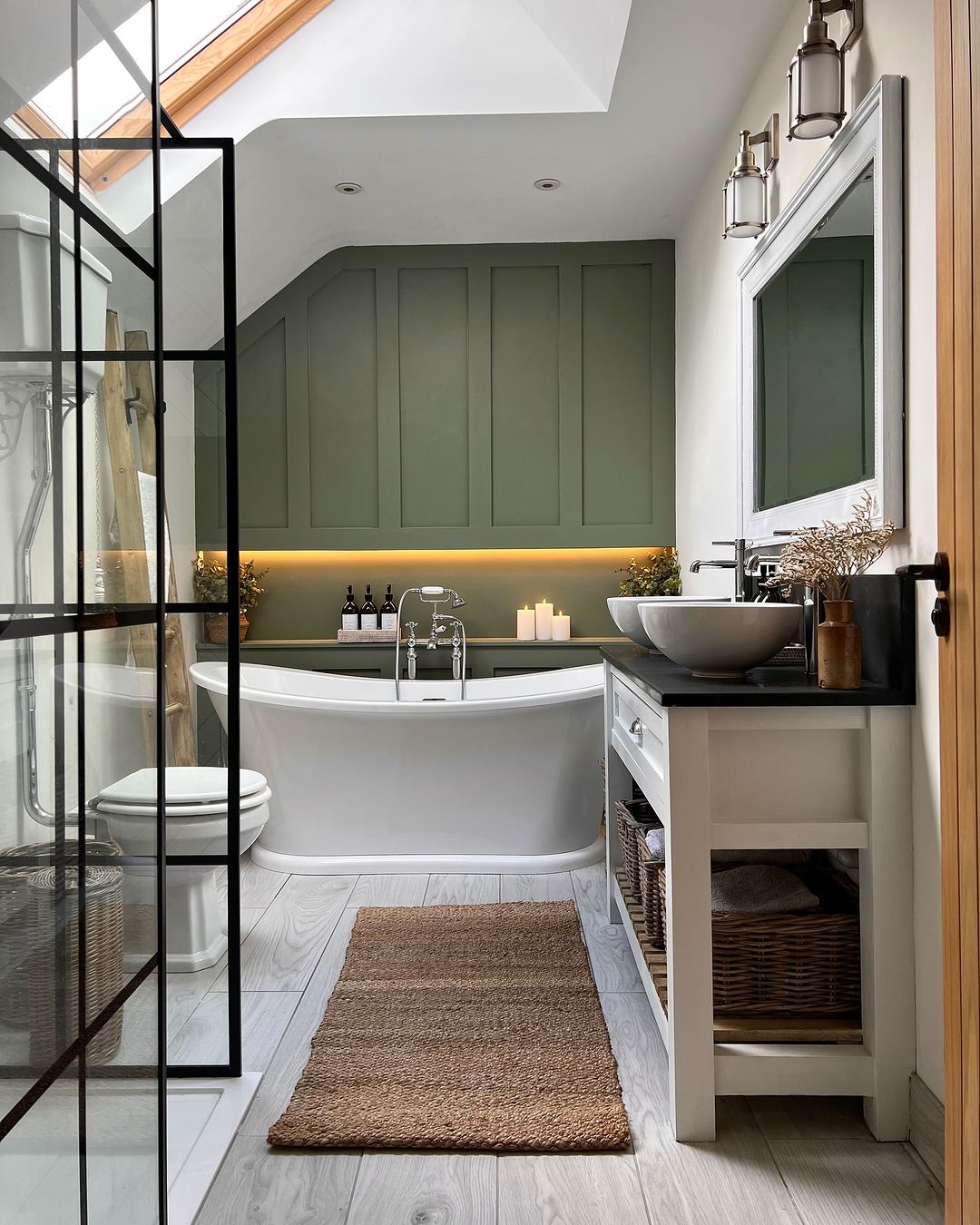 Image by cottagerenovationcwmrhys
Image by cottagerenovationcwmrhys
“Sarah Sherman Samuel, known for her minimalist aesthetic, recommends “using sconces on either side of the bathroom mirror for optimal task lighting.” She suggests selecting fixtures that match the bathroom’s style but also provide enough illumination for tasks like shaving or applying makeup.”
Natural Lighting
If your bathroom has access to natural light, it’s a fantastic asset. Natural lighting can make the room feel more open, fresh, and airy. Skylights, large windows, or even smaller, strategically placed windows can let in plenty of daylight, giving the bathroom a more organic, welcoming feel. To balance privacy with light, frosted glass or window treatments can allow sunlight in while keeping the bathroom private. Natural light is especially beneficial in small bathrooms, as it helps make the space feel larger.
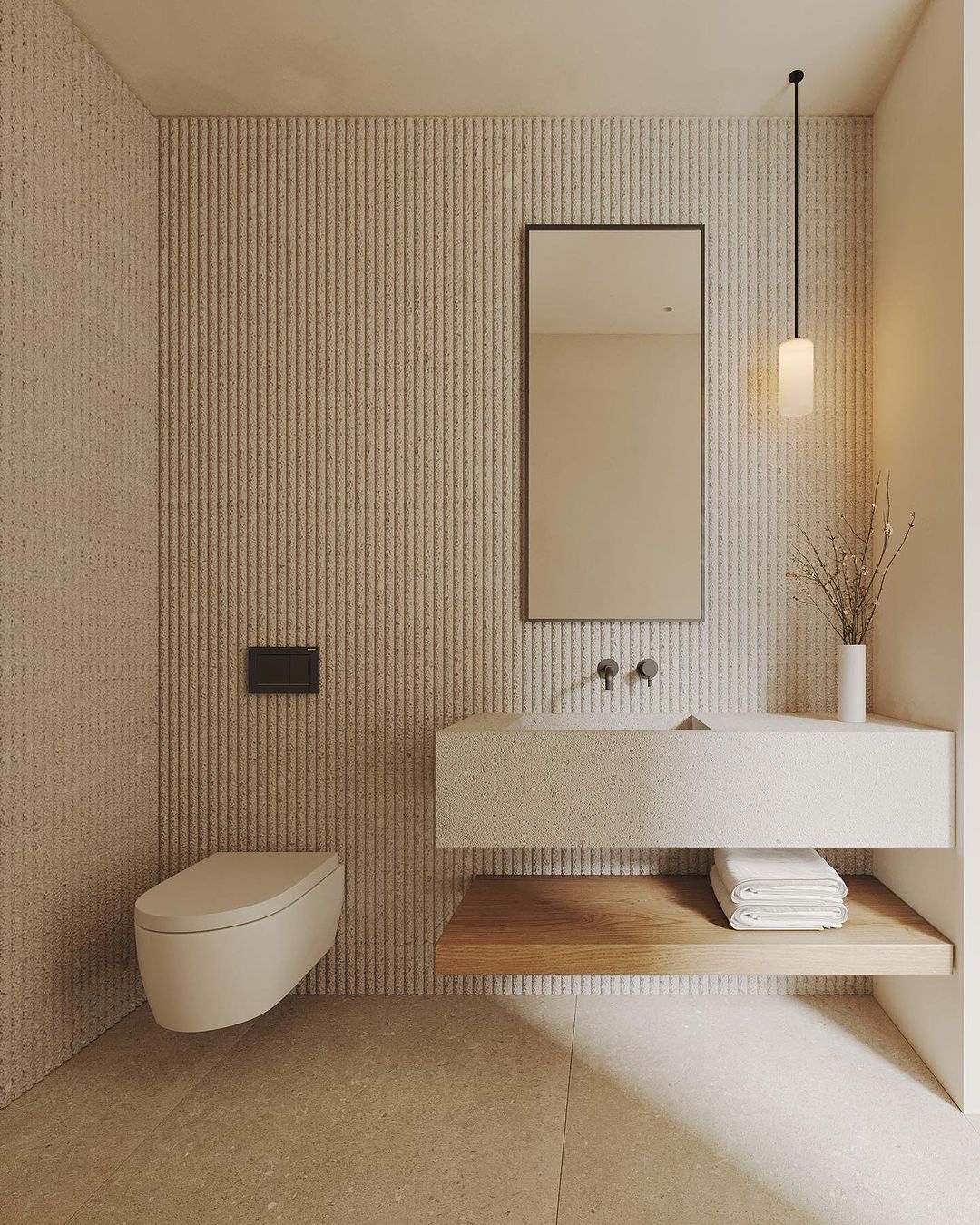 Image by nellavetrina
Image by nellavetrina
Read – 33 Beautiful And Chic Boho Bathroom Ideas You Will Love
Dimmable Lighting
Dimmable lighting offers flexibility and control over the brightness of your bathroom. With a dimmer switch, you can easily adjust the light levels to suit your needs—whether it’s bright, energizing light in the morning or a softer, more relaxing glow at night. Dimmers can be installed with ambient, task, or even accent lights, giving you full control over the atmosphere in your bathroom. This type of lighting is particularly useful if you use the bathroom for relaxation, as it can help set a calming mood for a bath or evening routine.
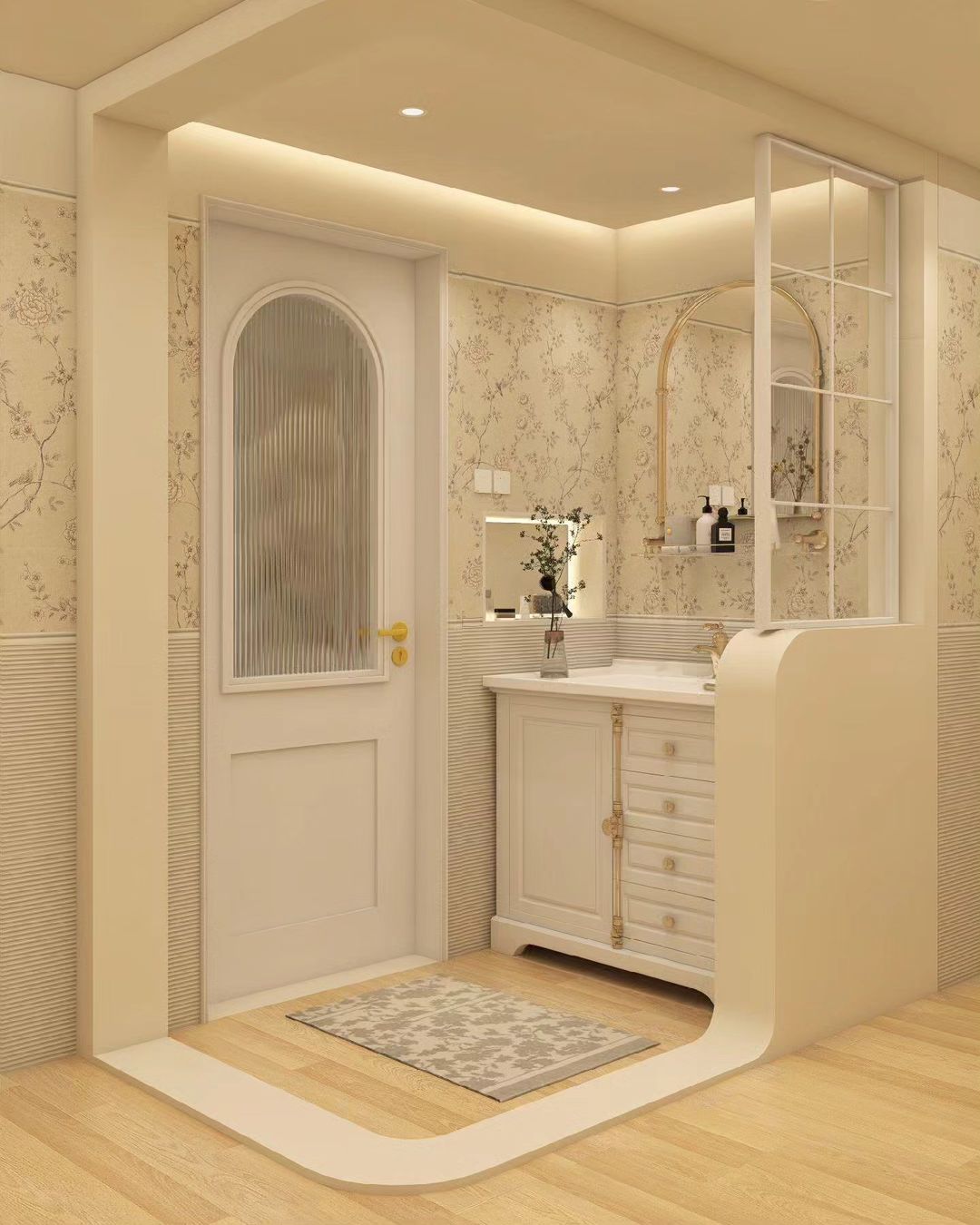 Image by vrishtidesigns
Image by vrishtidesigns
Nate Berkus, celebrity interior designer, highlights the importance of “installing dimmable lighting in bathrooms to create a spa-like atmosphere. Adjustable lighting lets you shift between bright light for getting ready in the morning and a softer glow for unwinding in the evening.”
Vanity Lighting
Vanity lighting is a key element of task lighting but deserves special mention due to its importance in grooming tasks. Properly placed vanity lights can reduce shadows and provide a more accurate reflection of your face in the mirror. For the best results, vanity lights should be installed at eye level on either side of the mirror, ensuring even lighting across your face. You can also pair these with a lighted mirror for additional clarity.
By incorporating these types of lighting—ambient, task, accent, decorative, natural, dimmable, and vanity—you can create a bathroom that’s not only functional but also a comfortable and stylish retreat. Each type of lighting works together to provide the perfect balance of brightness, relaxation, and design, ensuring your bathroom meets both practical and aesthetic needs.
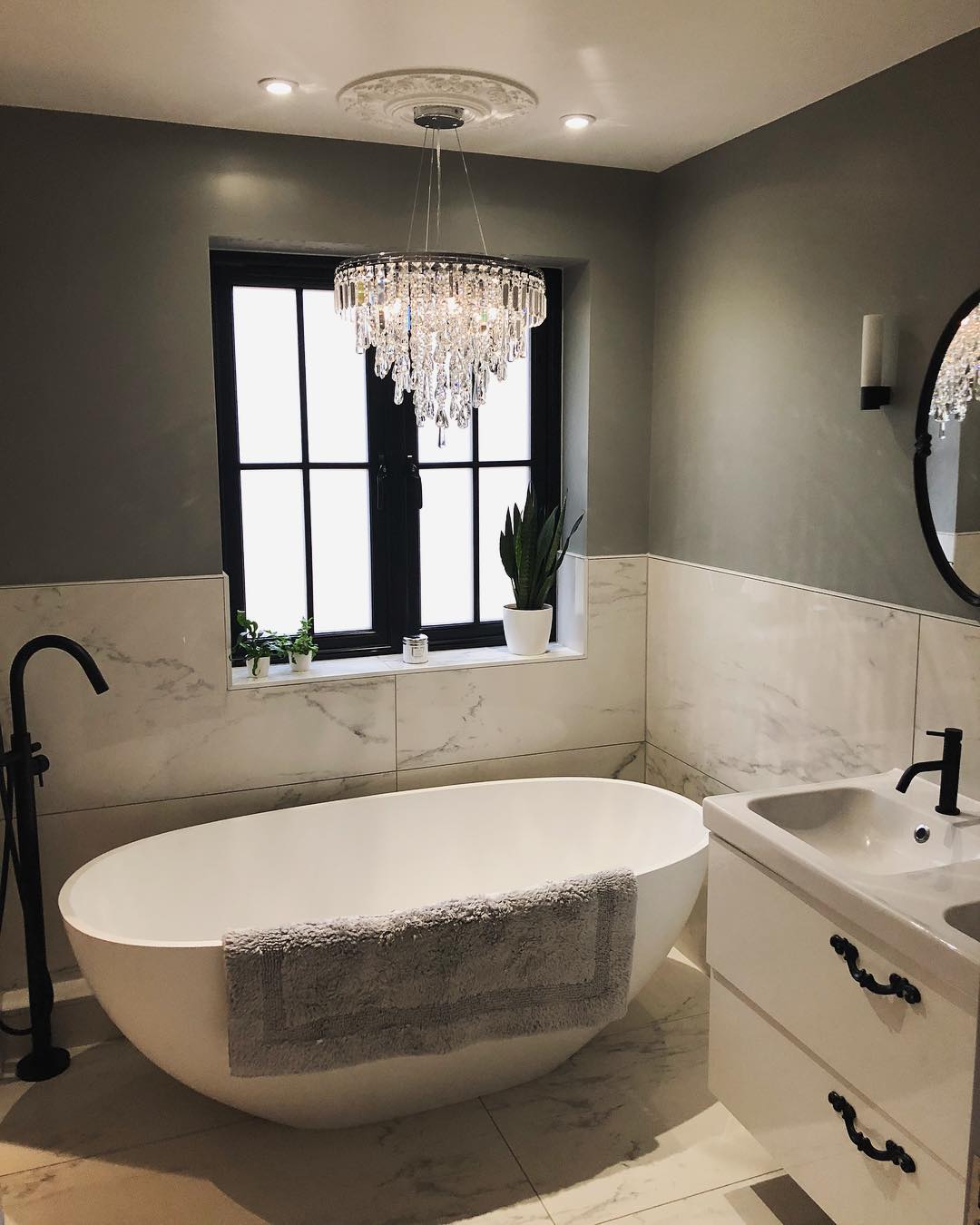 Image by ourlittlepieceofengland
Image by ourlittlepieceofengland
Amber Lewis, founder of Amber Interiors, advises, “When lighting a bathroom, focus on combining overhead lights with accent pieces like sconces or wall-mounted fixtures. The goal is to have balanced light that doesn’t cast shadows, especially near the vanity.”
Read – 35 Stylish Bathroom Towel Holder Ideas You Should See
3. Choose the Right Bulbs
The type of bulb you choose affects the look and feel of your bathroom lighting. Opt for bulbs with a soft, natural white color temperature (around 2700K to 3000K) to create a flattering, welcoming glow. Also, consider energy-efficient LED bulbs for longer-lasting, eco-friendly lighting.
How To Pick Right Bulbs
When choosing light bulbs for your bathroom, it’s important to aim for warmer light that mimics natural daylight. Avoid bulbs that feel too harsh or cold, as they can make the space feel clinical. Warmer lighting is more flattering and creates a relaxing atmosphere.
Here’s a quick overview of the common types of bulbs you might consider:
- LED: Yes, you can absolutely use LED bulbs in your bathroom! They’re energy-efficient, long-lasting, and come in a variety of color temperatures. They’re a great choice for vanity light since they offer bright, even illumination.
- Halogen: A good alternative to incandescent bulbs, halogen bulbs are generally warmer in tone and more affordable than LEDs. However, they don’t last as long as LEDs but can still be a solid choice for bathrooms.
- Edison: Edison bulbs are more for style than function. They don’t produce a lot of light (lumens) but are perfect for adding an industrial or vintage touch to your bathroom, especially in exposed fixtures. They’re great for accent lighting.
The color of your bulbs is just as important as the type. For bathroom lighting, look for bulbs with a color temperature of around 2700K (warm white) and a Color Rendering Index (CRI) of 90 or higher. This will give you a flattering, natural light, which is especially useful when you’re getting ready in the morning, and it will prevent your bathroom from feeling too cold or stark.
By keeping these factors in mind, you can create a bright, comfortable, and stylish bathroom.
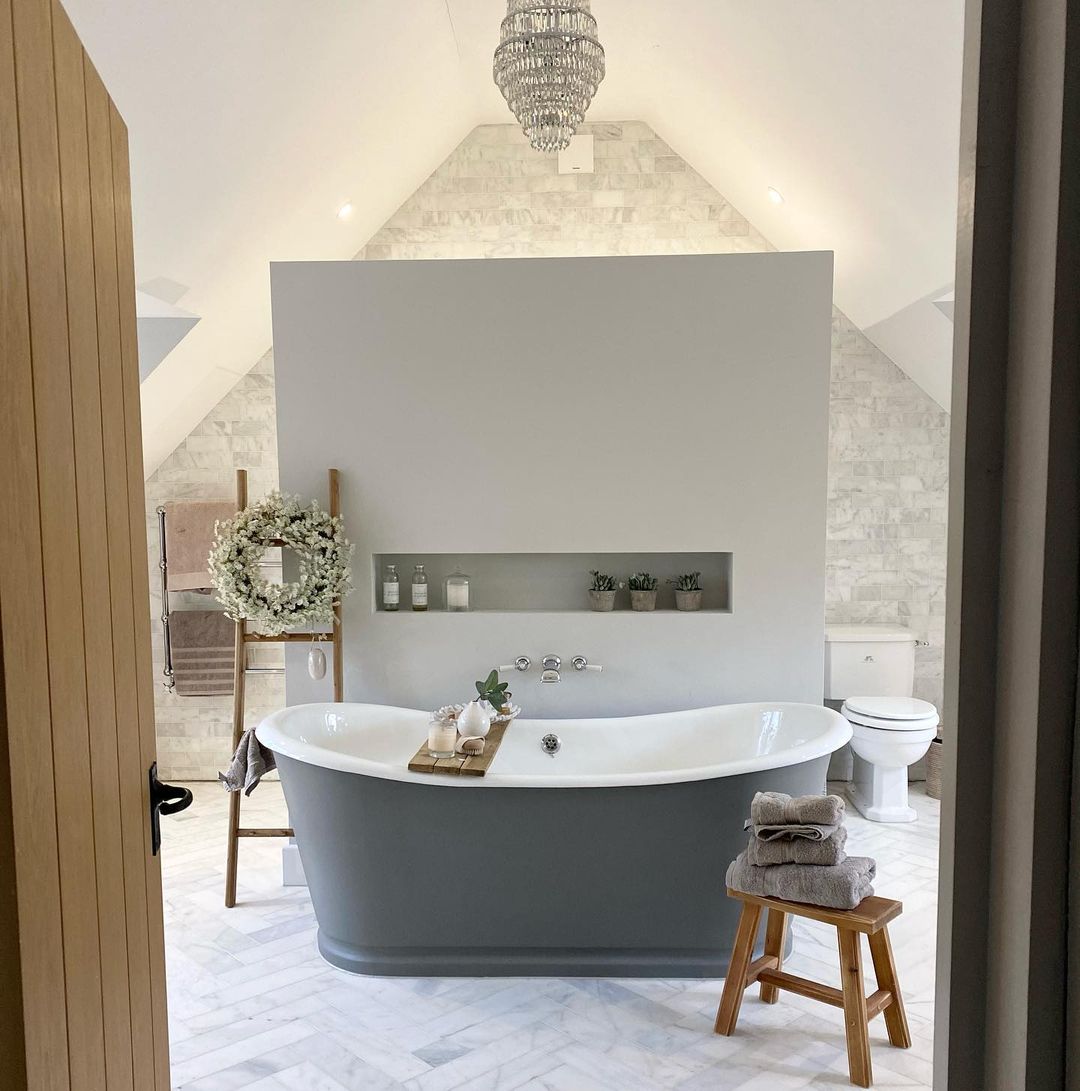 Image by lottieshousebuild
Image by lottieshousebuild
Read – 21 Enchanting And Whimsical Bathroom Ideas For A Dreamy Oasis
4. Consider Dimmable Lighting
Adding dimmers to your bathroom lighting lets you control the brightness depending on the time of day or your mood. Bright light in the morning helps you wake up, while dimmer light at night can create a relaxing atmosphere for winding down.
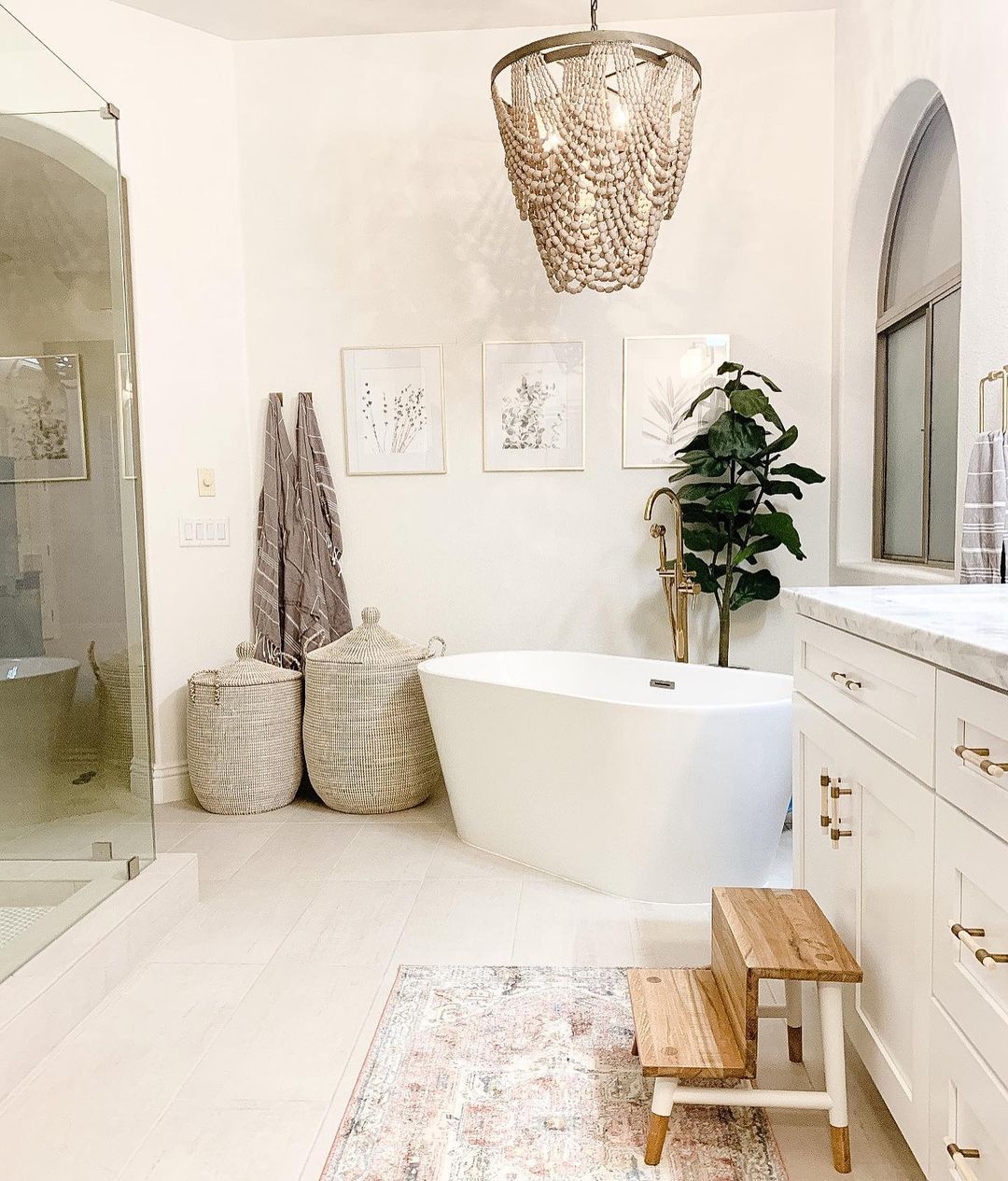 Image by amarisvalentinainteriors
Image by amarisvalentinainteriors
Erin Gates, author of Elements of Style, recommends mixing vintage and modern light fixtures. “Using a statement chandelier along with recessed lights and sconces can elevate the space and give the bathroom a more luxurious, layered feel.”
5. Think About Safety
Bathrooms are wet environments, so safety is key. Make sure to choose fixtures that are rated for damp or wet locations, especially for areas near the shower or bathtub. Check the IP rating on your lights to ensure they’re safe for use in these spots.
Read – 20 Chic And Unique Boho Western Bathroom Ideas You Should See
6. Match Your Style
Finally, don’t forget to match your lighting fixtures to the overall style of your bathroom. Whether your space is modern, classic, or rustic, there are plenty of fixtures that can complement your design while still providing the necessary light.
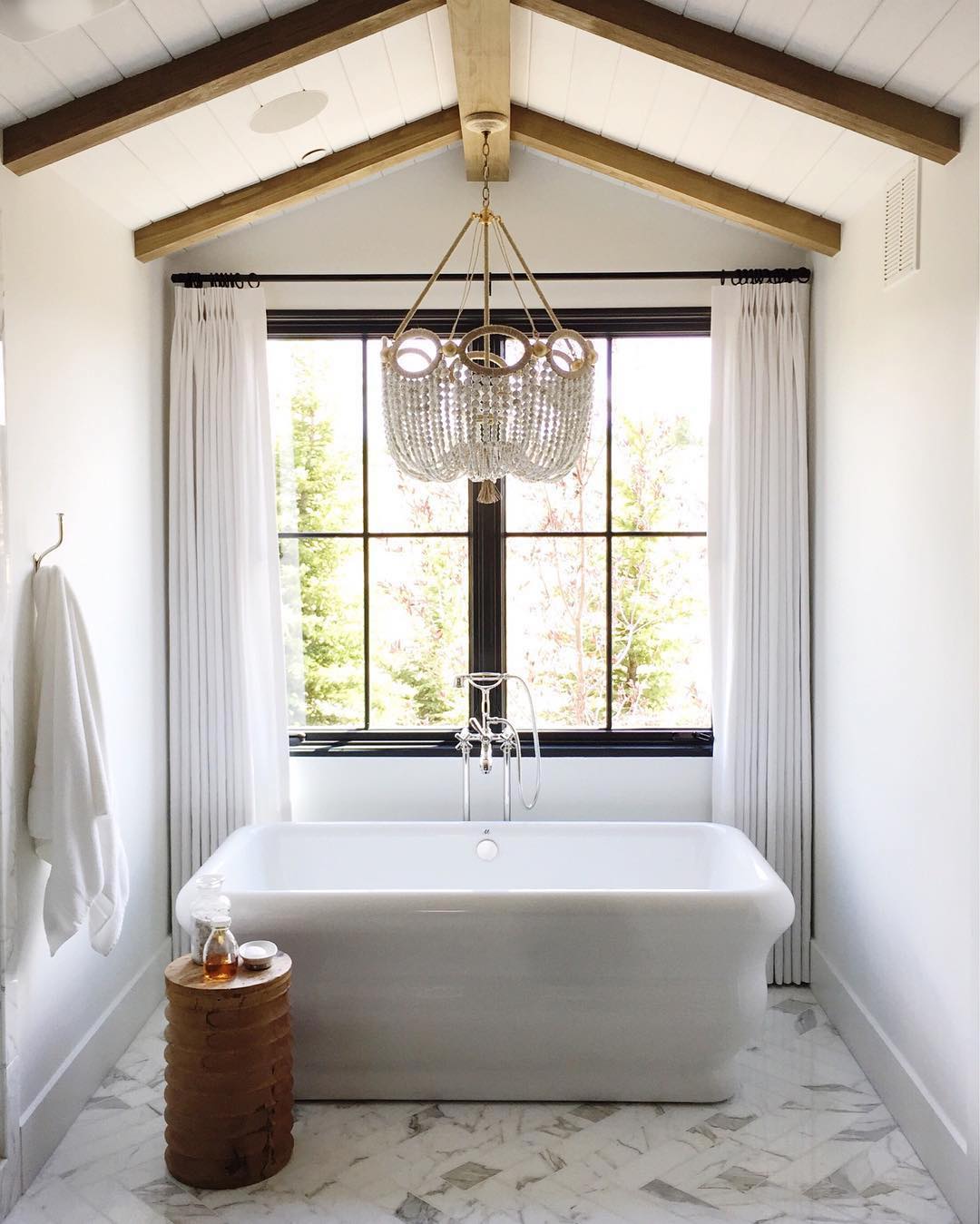 Image by duncan_lighting
Image by duncan_lighting
Read – 25 Dramatic Dark Bathroom Floor Ideas You Need to See
By considering these steps, you can create a well-lit, functional, and stylish bathroom that meets all your needs.
